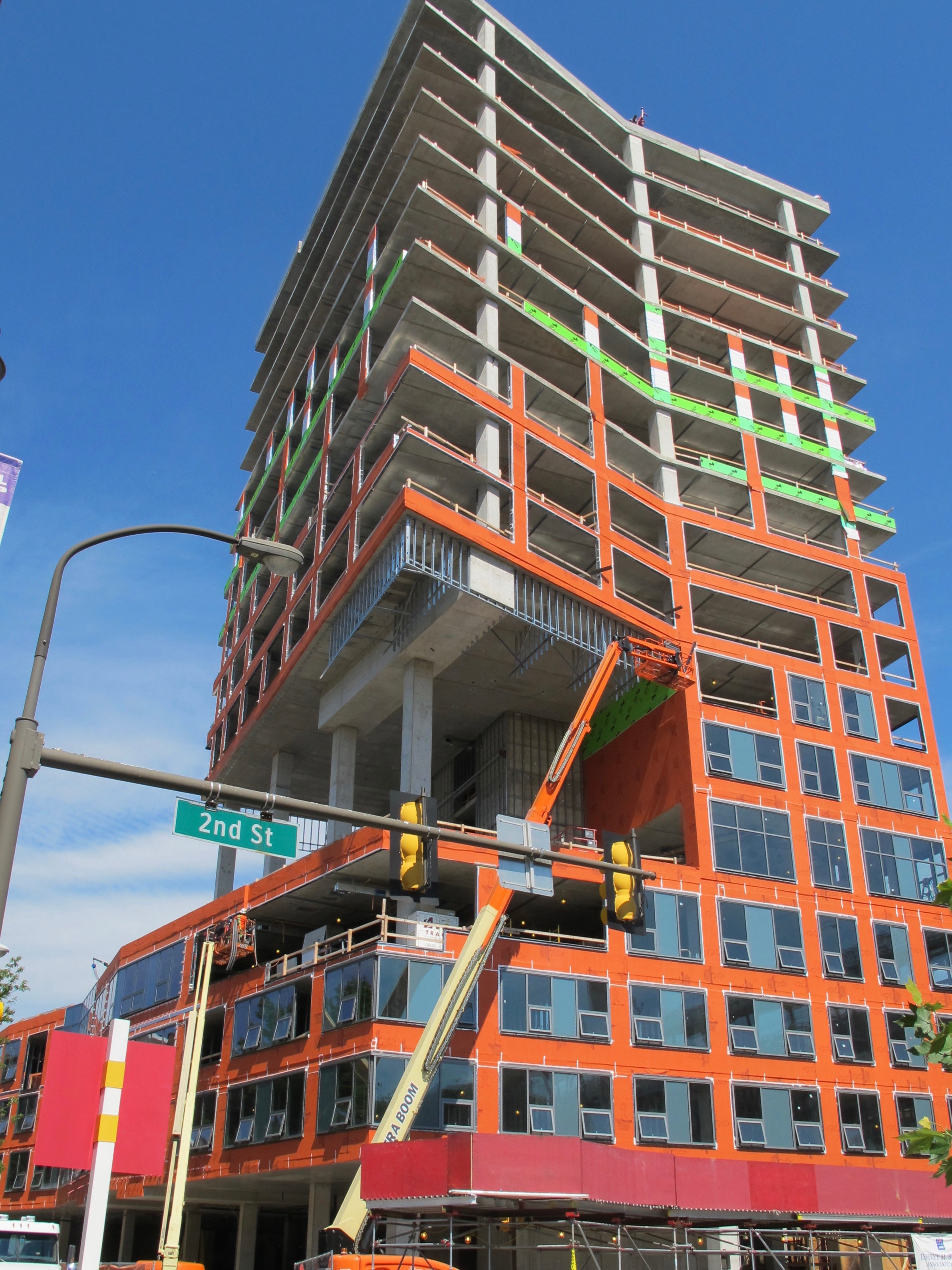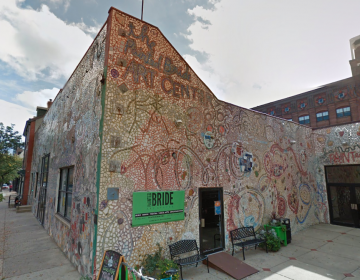Density bonus for mixed-income housing at work around the corner from One Water Street

PMC’s 11th-hour jockeying with the city over how to meet the density bonus it was granted for One Water Street made waves after the company chose not to include the promised 25 below-market-rate apartments in its development, instead seeking other ways to meet the bonus requirements. PMC ended up opting to pay $3.75 million into the city’s Housing Trust Fund. But the case raised questions about the teeth in the city’s zoning code, and what the future holds for the relatively new provisions allowing greater density in exchange for mixed-income housing.
Just around the corner from One Water Street is another building under construction, Bridge at 205 Race Street, which offers a less tumultuous example of a developer making good on inclusionary housing in exchange for extra density.
Two years ago, 205 Race Street became the first development to commit to leasing 10 percent of its high-end units at more affordable prices in exchange for a larger building, taking advantage of density bonuses included in the new zoning code. To date, it’s also the only applicant other than PMC that has sought a housing bonus, according to the Office of Planning and Development. And unlike PMC, its developer plans to follow through on its commitment without pause.
The 148-unit apartment complex, which will feature 15 reduced-rate units, was topped off at the end of June, Jeffrey Brown of Brown Hill Development told PlanPhilly last week. Within the coming months, Brown says his firm will release photos of the finished interiors, and the complex is on track to lease its first tenants early next year.
It has been far from a smooth road for 205 Race Street. The first incarnation of the project dates back to 2011. Brown Hill spent years wading through the reeds of development negotiation — variances, rehashed plans, negotiations with neighbors, nearby advertisers, and city agencies — but the mixed-income component of the project turned out to be a source of little drama.
“We were pleased to see that the new code even offered that bonus as an opportunity, and that’s how we looked at it, as an opportunity,” Brown said. “We said yes. We haven’t wavered a bit, and we’re delivering what we promised.”
Anne Fadullon, the director of the Department of Planning and Development, confirmed that there were no obstacles in bringing the mixed-income component to life for 205 Race Street.
Brown Hill is actually going a bit beyond what the zoning provision mandates by making its 15 affordable units representative of the building’s total housing portfolio, including studios, one-bedroom and two-bedroom units. “We just think it’s fair and non-discriminatory,” Brown said, noting that tenants would be unable to tell which of the units were being offered at a reduced rate.
After the One Water Street outcome, there were rumblings about PMC getting off cheaply through its $3.75 million contribution to the city’s Housing Trust Fund. In response, chair of the Central Delaware Advocacy Group (CDAG) Matt Ruben argued that the One Water Street outcome is a victory, and that the trust payment is potentially better for truly affordable housing, in part because developers providing units under the bonus are only required to keep a 15-year commitment to leasing them at a reduced rate. Moreover, developers have a choice between the two. What raised eyebrows at One Water Street was PMC’s counter-offer to swap the already approved and built bonus for site amenities like public art, rather than including mixed-income units in the new development.
Height bonuses are non-negotiable in the city’s zoning code. To prevent another One Water Street dustup, Fadullon says the development community needs to understand that if they choose to pursue a density bonus, the city will hold them to law as it did with PMC. Nonetheless, the Department of Planning and Development is going to add some emphasis to the provision going forward.
“To further clarify the requirements, we are making changes to the code bulletin associated with this section of the Code to promote compliance at the time of permitting as opposed to the issuance of the Certificate of Completion,” Fadullon said via email.
While there is great incentive for inclusive housing at different levels of affordability, it’s less clear what the density bonus means to developers as a fiscal tradeoff. Brown declined to open up its firm’s books to explain the exact financial workings of the bonus, but he did speak generally to the point.
“At the end of the day, we’re convinced it makes good economic sense for us, and makes common sense for Philadelphia. I think that as Philadelphia continues to thrive, this is an important element to maintain and to nurture the inner city population. This, to me and to our development team, is completely appropriate and advantageous,” he said.
It’s working well in New York City, Brown added. His firm recently opened up the Stack, a 28-unit complex and the first modular development of its kind in Manhattan. Brown Hill committed to the city’s 421-a tax benefit program, which requires that 20 percent of our units be affordable, compared to Philadelphia’s ten percent. So in the case of the Stack, six of the 28 units are being leased at a reduced rate. Brown says the company received over 25,000 tenant applications for those six units.
“People want and need to live in the city for a number of reasons and they enjoy different income levels,” Brown said. “We think that shouldn’t be a penalty. It creates diversity in our building as well, and that’s a good thing.”
WHYY is your source for fact-based, in-depth journalism and information. As a nonprofit organization, we rely on financial support from readers like you. Please give today.






